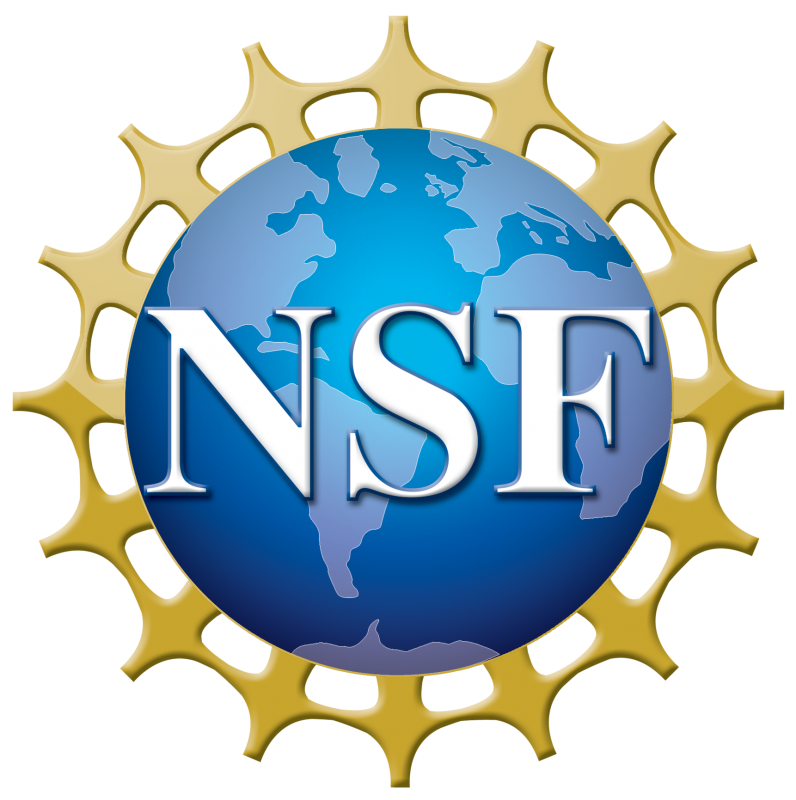Sidewinding in limbless locomotion and its application to optimization of robotic gaits
Bo Lin
Georgia Institute of Technology, SCMB
ABSTRACT: Lateral undulation gaits (traveling wave of body curvatures propagating from head to tail) are commonly seen in many biological and robotic limbless locomotors. However, lateral undulation gaits cannot produce effective motion on hard ground. In this case, sidewinding is one of the most effective locomotion gaits. Studying sidewinding, we focus on contacting planning (periodically making and breaking environmental contact), which generates robust and effective locomotion. We use a framework in geometric mechanics, which separates the configuration space into a shape space (the internal joint angles), a contact state space, and a position space. Then we optimize the function that couples the contact state space and the shape space. Our framework provides physical insights into contact planning and reveals principles of empirically derived contact pattern prescriptions. We apply this framework to the gait design for robots with few motors, for example a 6-link robot. We test our designed gaits by robophysical experiments and obtain excellent agreement. We expect our scheme to be broadly applicable to robots which make/break contact.
A statistical approach to developmental transitions
Simon L. Freedman
Northwestern University, CQuB
ABSTRACT: Embryonic development is often viewed as a sequence of discrete state transitions through a low-dimensional cell-fate landscape. Experimental tools such as single-cell RNA sequencing, which measures the full distribution of a cell’s possible genetic compositions, can be used to obtain trajectories of gene expression during a developmental transition, but it remains unclear how RNA dynamics relate to changes in developmental state space. We show that the discrete qualitative changes, or bifurcations, of cellular state space can be analytically pinpointed and quantitatively assessed directly from the temporal covariance of gene expression. Moreover, the direction of the bifurcation, corresponding to the soft mode of the dynamical system’s Jacobian, is analytically extractable, providing critical clues toward the correlative mechanisms that drive the transition. We demonstrate our analysis on in-silico gene-regulatory networks, and use it to elucidate the genes that drive the development of hematopoietic stem cells into neutrophils. Our work demonstrates that development exhibits features of classical dynamical systems, such that theory may enable predictably perturbing cell-scale state changes from molecular-scale data.
Single particle tracking in live cells: studying transport along the cytoskeleton
Keisha Cook
Clemson University, formerly SCMB
ABSTRACT: Live cell imaging and single particle tracking techniques have become increasingly popular amongst the mathematical biology community. Lysosomes, known for endocytosis, phagocytic destruction, and autophagy, move about the cell along microtubules. Intracellular transport of lysosomes is carried out in membrane-bound vesicles through the use of motor proteins. Single particle tracking methods utilize stochastic models to simulate intracellular transport of cargo and give rise to rigorous analysis of the resulting properties, specifically related to the transition between stationary and motile states. With this confidence in our methodology, we consider determining an optimal frame rate necessary to infer properties of the underlying mechanisms of this transport. Many studies rely on selecting an arbitrary frame rate that satisfies the experimental realms of the work and allows for extraction of specific underlying properties, ranging anywhere from 1Hz to 200Hz. We explore this question by developing a method to quantify the critical statistics of the model versus the transport data.
Multimodal analysis of skin regeneration
Christian F. Guerrero-Juarez
NSF-Simons Center for Multiscale Cell Fate Research, University of Califormia, Irvine
ABSTRACT: Unlike small wounds, healing of large excisional skin wounds leads to regeneration of hair follicles and dermal adipocytes in adult mice. New hair follicles regenerate from wound epidermis and wound fibroblasts by reactivating embryonic-like hair follicle morphogenesis programs. New adipocytes regenerate around newly formed hair follicles from myofibroblasts, a specialized contractile wound fibroblast, via the process of cellular reprogramming. We studied diversity of fibroblasts in large skin wounds using 3’-end single-cell RNA-sequencing and demonstrate a large degree of fibroblast heterogeneity in the wound dermis. Coupling pseudotime and RNA velocity analyses demonstrates that some fibroblast clusters likely represent sequential states during fibroblast differentiation toward a contractile state, while other clusters appear to represent distinct fibroblast lineages. Analyses of these fibroblasts reveals that a subset of these wound fibroblasts expresses hematopoietic markers, suggesting a potential myeloid origin. We validated this finding using single-cell western blot as well as full-length single-cell RNA-sequencing on genetically labeled wound fibroblasts. Furthermore, using bone marrow transplantation and Cre recombinase-based lineage tracing experiments, we rule out cell fusion events and confirm that hematopoietic lineage cells give rise to a subset of wound fibroblasts that form new wound adipocytes. These findings suggest potential new treatments for skin wound healing pathologies and other fibrotic disorders.
tRNA microevolution in the presence of transcription-associated mutagenesis
Hector Baños
Dalhousie University, formerly SCMB
ABSTRACT: Modeling the evolution of genes subject to strong selection poses many challenges and is even more difficult when such genes are subject to increased mutagenesis such as transcription-associated mutagenesis (TAM). One class of such genes is the tRNAs. We present a model that describes tRNA microevolution by examining their allelic variation in a population. Markov substitution models form the basis for our model, which is further carefully curated to overcome challenges raised by the selective and mutational pressures affecting these genes. We use the model to successfully describe most of the allelic variation at tRNA genes in the model system C. elegans, and show that TAM dominates tRNA microevolution.
Deciphering the physical rules of biological patterns: how marine glass skeletons form from biological emulsions
Asja Radja
NSF-Simons center at Harvard
ABSTRACT: Life on our planet is organized at many length scales ranging from the molecular to the macro, and there is an incredible amount of complexity in morphologies and constituent interactions at these various levels of organization. It is now clear that some biological complexity is created by an elusive landscape of physical processes not defined by the genetic code. Here I focus on the formation of silica (glass) skeletons of radiolarians and phaeodarians, single-celled protists found in all of the oceans on earth. The striking geometric structures of radiolarian and phaeodarian skeletons have inspired scientists, artists, and architects for decades. While several attempts have been made to rationalize the formation these intricate structures, little clarity has emerged as to whether it is more appropriate to consider the patterned skeletons as emerging from directly encoded, active cellular processes, or as an energetically passive result of material equilibration. Here I provide the first mathematical
PLENARY LECTURE
Forward and reverse modeling to make the most of 'tiny data' in systems bio-medicine
Belinda Akpa
Oak Ridge National Laboratories; University of Tennessee Knocksville
ABSTRACT: At a time when many are wrangling with biological ‘big data’, there remain important problems that are fundamentally data limited – often physiological questions for which there is little quantitative data, and further data collection may be hampered by limited resources, ethical constraints, or simply a lack of clarity as to which measurements are most likely to shed light on mechanisms of interest. Mathematical modeling can make impactful contributions in these contexts by maximizing the value of the existing biological literature and operationalizing data from disparate studies to build dynamic models. In this presentation, I will describe how – in a case where clinical trials are essentially impossible – we integrated limited physiological data with known biological and physicochemical principles to explore the multiscale mechanisms of action associated with a potentially life-saving therapeutic.


